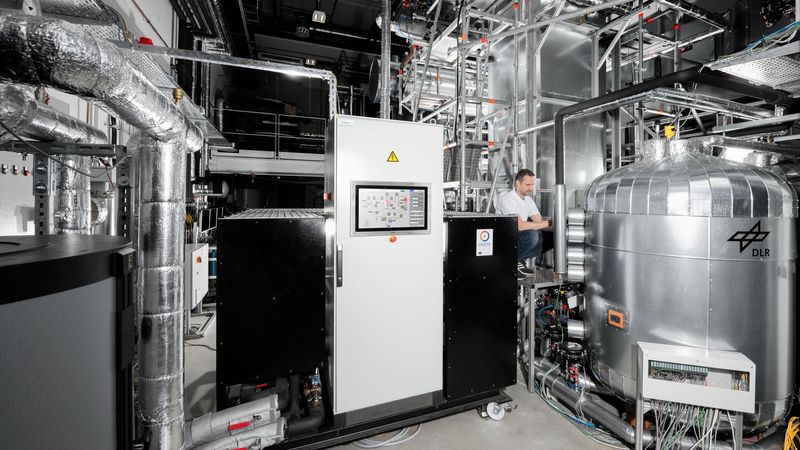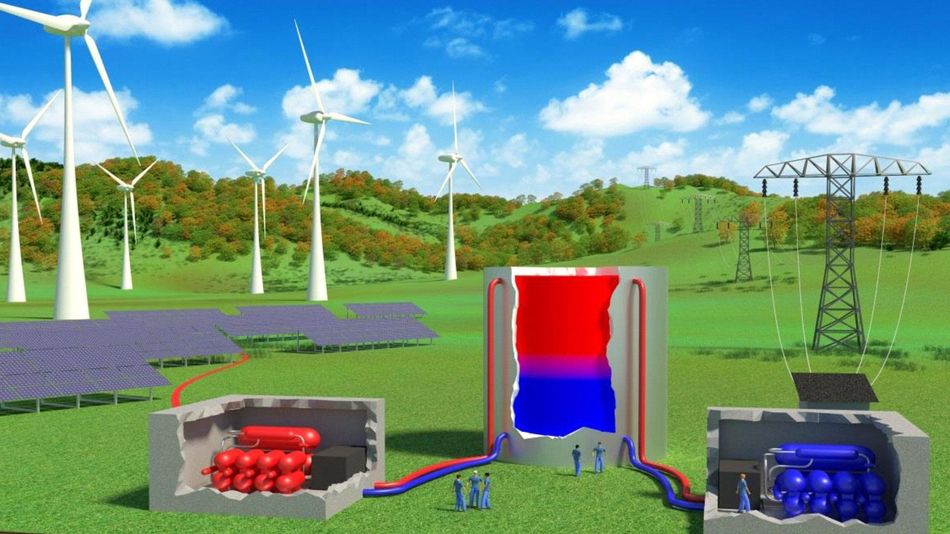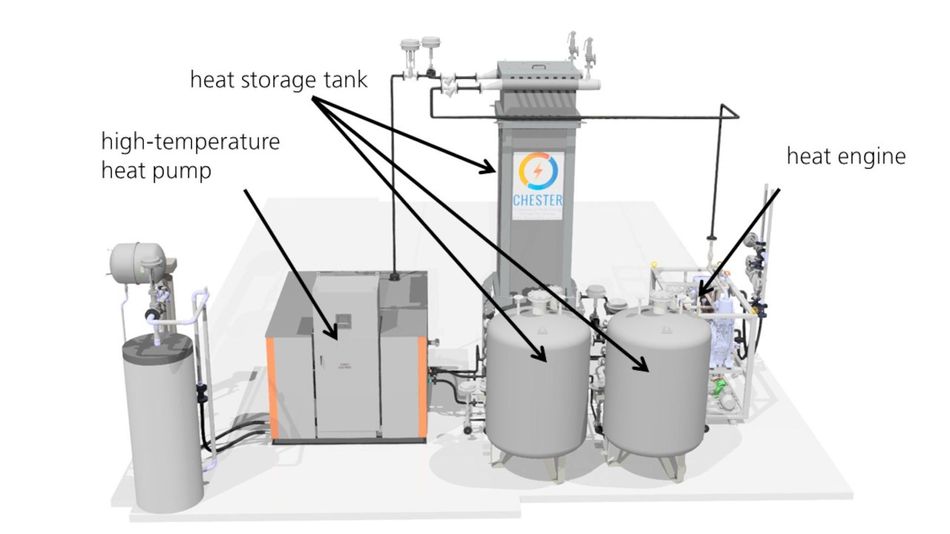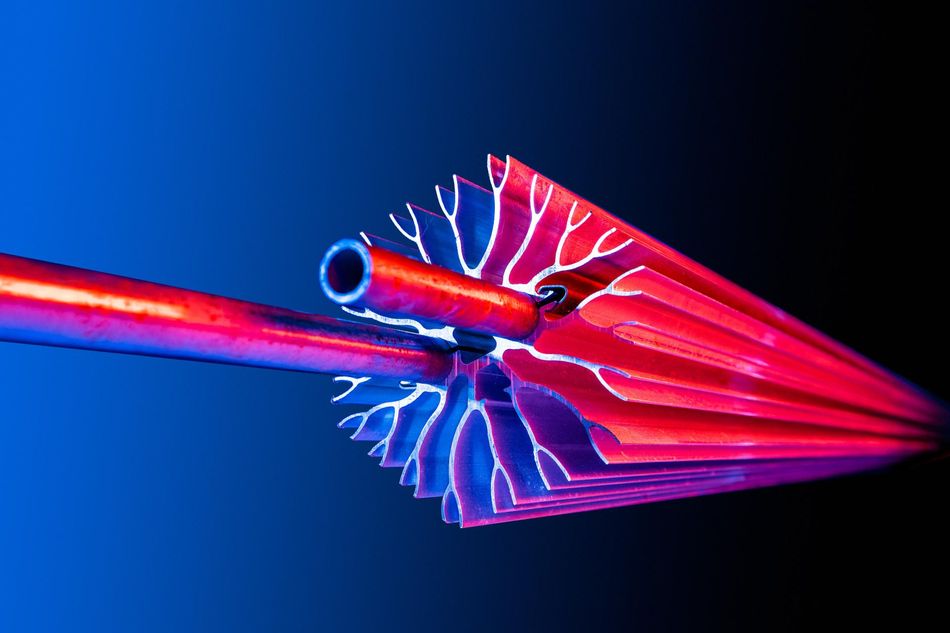Bridging periods of reduced sunlight and peak loads in a climate-neutral way using salt
Solar power at night? Wind energy without wind? The German Aerospace Center (DLR) as a scientific project participant together with industry and research groups, has built and successfully tested a storage system for renewable energies.

Carnot batteries can store electrical energy in the form of heat. Credit: © DLR. All rights reserved
Solar power at night? Wind energy without wind? The German Aerospace Center (Deutsches Zentrum für Luft- und Raumfahrt; DLR) as a scientific project participant together with industry and research groups, has built and successfully tested a storage system for renewable energies. Known as the Carnot battery, the system can store electricity in the form of heat that can be reused to generate electricity when needed. Nitrate salts serve as the heat storage medium.
On an industrial scale, the technology has the potential to compensate for fluctuations in renewable energy sources. This makes it another important step towards a secure and reliable supply of renewable energy.
Storing renewable energy using salt
Bridging periods of reduced sunlight and peak loads in a climate-neutral way is a core challenge of the energy transition. Energy storage will make it possible to use surplus energy when there is no wind or sunlight.
In the Compressed Heat Energy Storage for Energy from Renewable Sources (CHESTER) research project, the participants built and tested a Carnot battery at the DLR site in Stuttgart. “We are working on optimising the technology so that it can be used by industry,” explains Maike Johnson, who is in charge of the project at the DLR Institute of Engineering Thermodynamics.
Electricity – heat – electricity
The heart of the Carnot battery is a latent heat storage system, developed by the DLR Institute of Engineering Thermodynamics, which is filled with approximately two cubic metres of nitrate salts. Using the electricity that represents the energy, a high-temperature heat pump heats the salt to 150 degrees Celsius. “Latent, because the salt is melting during the heat process. A part of the heat input seems to be hidden ‘latently’ in the loosening of the bonds in the salt crystals”, explains Maike Johnson. As a result, depending on the salt, the latent heat storage system can absorb around twice as much energy as could be achieved by simply heating the crystals.
The typical storage time of Carnot batteries is several hours to days. To discharge the stored energy, a second circuit transfers the heat to a heat engine that drives a turbine-generator unit. The electricity generated in this climate-neutral way can be fed back into the grid.
Heat exchangers resemble snowflakes
The novelty of the DLR heat storage system lies in its heat exchangers. The pipes, designed empirically and mathematically by the DLR Institute of Engineering Thermodynamics run entirely through the storage tank. They have two channels for the coolant circuits – one for charging and one for discharging the heat storage tank. This allows for operation with different coolants to couple the different process components of the storage system.
For efficient energy transfer between the steam circuits and the salt, the heat exchangers have a fin-like cross-section that resembles a snowflake. This results in a large contact surface for the salt.
Individual components assessed prior to test run
Over recent months, the researchers have individually tested all of the system’s components and each process of the energy storage cycle. “The main challenge is to find and set the optimal operating parameters. For a stable heat transfer between the heat pump and the storage tank and then to the heat engine, all components have to work together in harmony and at the necessary level of performance,” explains Maike Johnson. “How much coolant is needed? How quickly can the salt be heated and cooled? How much power can we obtain from the stored heat?”
The researchers are now testing different load scenarios, heat flows and temperature curves to determine the system’s limits. In the case of larger systems, heat losses and different operating conditions may be particularly important, which is why this is currently being investigated using a pilot plant
Carnot batteries for sector coupling
A great advantage of Carnot batteries is that they can easily be connected to other energy systems for sector coupling. In addition to generating electricity, they can also provide heat. This is particularly interesting for industry, as the stored high-temperature heat can be used directly in many industrial processes. In addition, Carnot batteries can be coupled to seasonal heat storage systems that can store the thermal energy for months.
The size, capacity and energy management of Carnot batteries can be adapted to the respective requirements of each process. This makes them suitable for an application known as ‘smart district heating’, for example. This involves local electricity and heating networks in the vicinity of the storage facility that supply residential estates or office complexes with energy.


